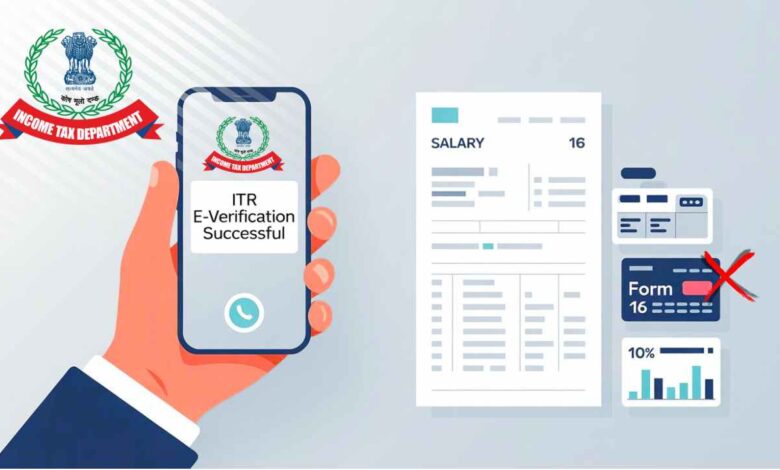ITR: How to File Income Tax Return Without Form 16? Know the Easy Steps

ITR: Form 16 is a crucial document when filing your Income Tax Return (ITR). Typically, employers provide this form to their employees, and it contains detailed information about the employee’s salary and Tax Deducted at Source (TDS). However, there can be situations where you might not have Form 16. For instance, you might have switched jobs, your employer might not have issued Form 16 on time, or you could be a freelancer or self-employed individual.
Don’t worry! You can still file your income tax return even without Form 16. This requires some alternative methods and documents. Let’s delve into the details.
Necessary Steps to File ITR Without Form 16:
Follow these steps to file your income tax return if you don’t have Form 16:
- Collect Salary Slips: If you don’t have Form 16, gather all your salary slips for the entire financial year. These slips will contain information about your monthly salary, allowances, and other deductions. This will help you calculate your total income and TDS.
- Download Form 26AS: Form 26AS is an annual tax statement available against your PAN (Permanent Account Number) on the Income Tax Department’s website. It details your income from various sources and the taxes deposited (TDS, TCS, Advance Tax, etc.). You can easily download it from the income tax portal. Cross-verify the information in Form 26AS with your salary slips.
- Calculate Total Income: Calculate your total income for the year from your salary slips, bank statements (to ascertain interest income), rent receipts (if you have rental income), and other income proofs. This includes salary, income from house property, capital gains, and income from other sources.
- Calculate and Verify TDS: Calculate the total TDS from your salary slips and Form 26AS. If there’s any discrepancy, contact your employer to understand the reason.
- Account for Deductions: For old tax regim calculate all the deductions you are eligible for under various sections of the Income Tax Act (like 80C, 80D, 80G, etc.). Keep your investment proofs handy for this (e.g., life insurance, health insurance, PPF, NSC, mutual funds (ELSS), home loan interest certificates, donation receipts, etc.). Accurate calculation of deductions will reduce your taxable income.
- Calculate Taxable Income and Final Tax: After subtracting all applicable deductions from your gross total income, you will arrive at your taxable income. Then, calculate your final tax liability based on the applicable tax slabs. If you need to pay additional tax, deposit it within the stipulated time. If you are eligible for a refund, mention it in your return.
- Select the Correct ITR Form: Choose the correct ITR form (e.g., ITR-1 Sahaj, ITR-2, ITR-3, ITR-4 Sugam, etc.) based on your sources and quantum of income.
- File the Return on the Income Tax Portal: Go to the Income Tax Department’s website, accurately fill in all the information in the selected ITR form, and submit the return.
- E-verify: After submitting the return, you must e-verify it. E-verification can be easily done through Aadhaar OTP, net banking, or a Demat account. If you don’t e-verify, your return will be considered incomplete.
Points to Remember:
- Even without Form 16, filing your income tax return accurately and on time is crucial.
- Keep all necessary documents, such as salary slips, bank statements, and investment proofs, readily available.
- Always download Form 26AS and reconcile it with your income details.
- Be careful during calculations to avoid any errors. If needed, you can consult a tax expert.
Filing an income tax return without Form 16 might be slightly more time-consuming, but it’s not a difficult task if you follow the correct procedure. The steps outlined above will guide you through this process.

